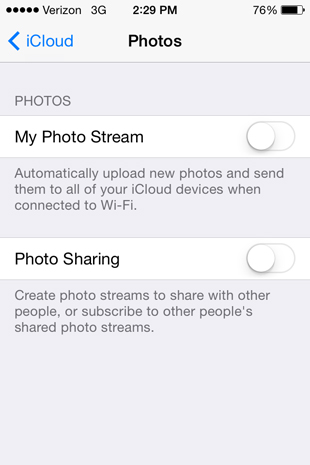How to protect or delete your photos in iCloud
The recent hacking of nude celebrity photos is making some people wonder how safe their own photos and other personal data are on cloud storage platforms such as Apple's iCloud.
"I think there are a lot of folks, especially celebrities, that don't take their information security seriously and they casually take pictures of themselves and they don't really go and find ways to secure their personal data," Jeff Schilling of the cloud service provider Firehost told CBS News.
Apple said Tuesday afternoon that its own investigation has found no security breach in iCloud; instead, it says "certain celebrity accounts were compromised by a very targeted attack on user names, passwords and security questions, a practice that has become all too common on the Internet."
While the investigation continues, there are some steps every user can take to keep their files as secure as possible.
The first step to securing your data is to know where it's stored. If you take pictures on an iPhone, once you enable the function called My Photo Stream in the settings on your Apple device, it uploads every photo you take to iCloud.
This is useful if, for example, you take vacation photos on your iPhone and want to view them later on your laptop.
But if you would prefer not to automatically store your photos in iCloud, there is an easy solution: you can disable My Photo Stream completely.
To do this on your iPhone, go to "Settings", and then select "iCloud" > "Photos" and switch "My Photo Stream" off. You also need to make sure to turn this function off on your other devices.
If you have previously opted to back up all your photos on iCloud, which a lot of users do, then iCloud automatically uploads new photos from My Photo Stream to iCloud and pushes them to all your other connected devices.
And in case you just want to delete a few photos that you are particularly worried about: on your iPhone, select "Photos" > Albums and go to "My Photo Stream," which is between "Camera Roll" and "Videos." From there you just need to tap "Select" in the upper right corner and delete the photos you want deleted. As a result of this action, the photos should disappear from the Photo Stream and all devices except the one you took the photos on originally.
Password security
If you like the convenience of storing photos in the cloud -- and millions of people do -- then protect them by making sure your Apple ID password is as strong as possible. You can update your password on the Apple website.
Here are some basic tips for creating stronger passwords:
1. Make your password long. Apple requires your password to have a minimum of eight characters, not contain more than 3 consecutive identical characters, as well as include a number, an uppercase letter and a lowercase letter. However, it is better to use an even longer password of at least 14 characters.
2. Use a combination of letters and numbers, upper and lower case and symbols.
3. Avoid using easy-to-guess words, familiar dates like your birthday, or anything found in the dictionary.
4. Do not reuse the same password on multiple accounts.
5. Use the two-step verification feature, which is offered for Apple's iCloud. Every time you log in to your account from a new computer, Apple will instantly send a code number to your iPhone or other Apple device, which you'll need to enter to complete the process. Someone who steals your password alone will not be able to get in. To enable this function, go to My AppleID and then select "Manage your Apple ID" > "Password and Security" > "Two-Step Verification" to set it up.

